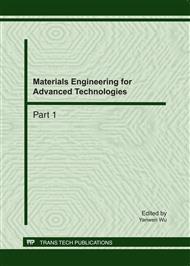p.1457
p.1463
p.1469
p.1475
p.1480
p.1485
p.1489
p.1496
p.1502
Dynamic Study of 8-R Seven Bar III Degree of Freedom Linkage Mechanism
Abstract:
The system dynamics mathematical model for 8-R seven-bar Ⅲ linkage is induced through plurality, and then translated into matrix format, the modeling is solved for given mathematical model as well as the correctness of overcome is analyzed to give relative response curve, and the purpose is to calculate energetic parameter during the mechanism working precisely, meanwhile experiment results show constraint reaction force and driving force in the process of shearing with rolling-cutting bilateral shear , by using statistical energetic parameter to verify the correctness of above mentioned mathematical model as well , which gives a basis for design , control principle analysis and practical use for the mechanism .
Info:
Periodical:
Pages:
1480-1484
Citation:
Online since:
June 2011
Authors:
Price:
Сopyright:
© 2011 Trans Tech Publications Ltd. All Rights Reserved
Share:
Citation:


